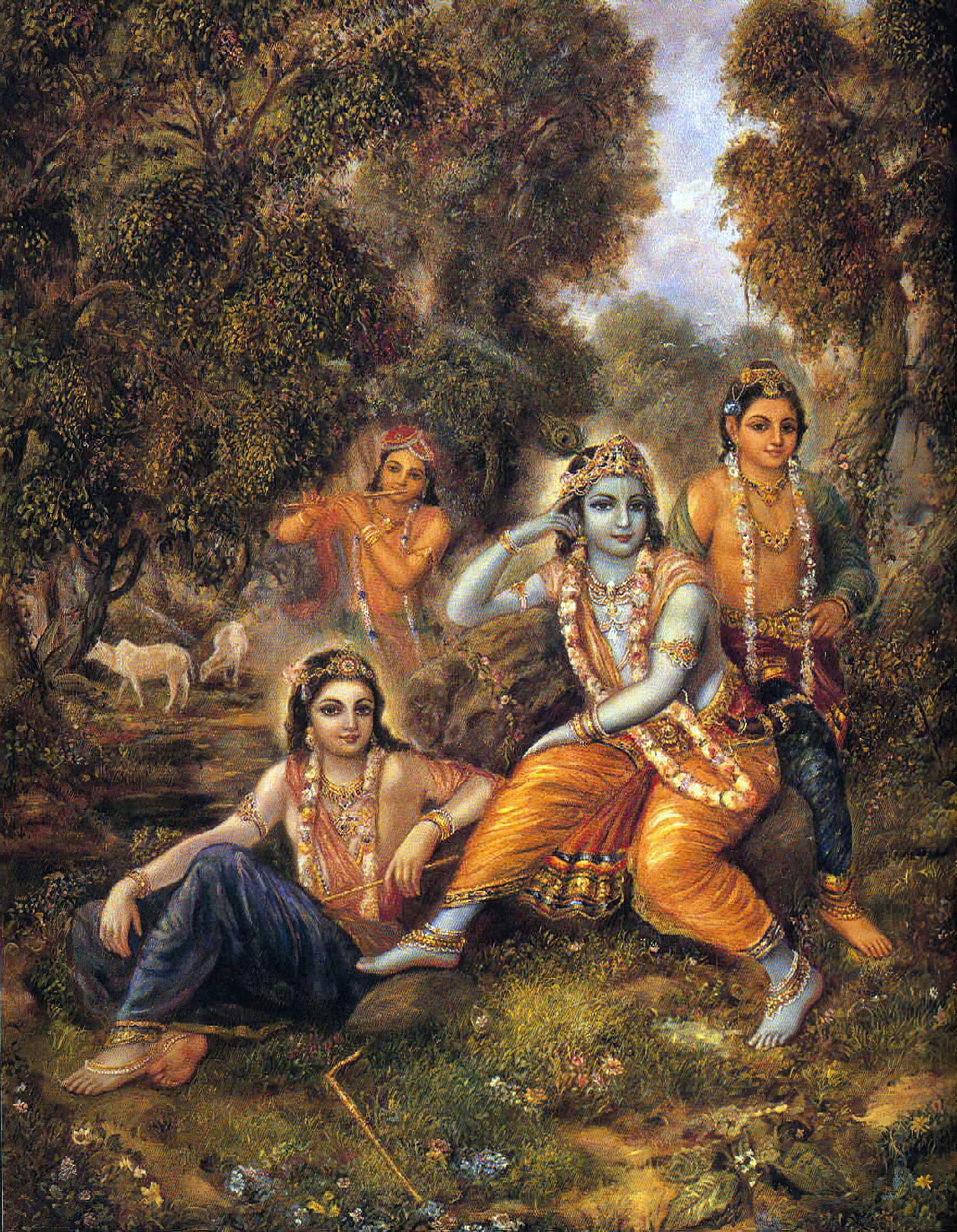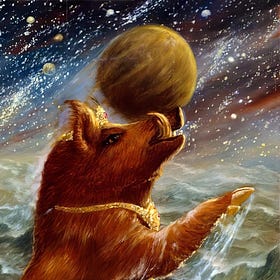Units of time in the Vedas
The Srimad Bhagavatam gives us a condensed explanation of the measurement of time according to the Vedas. This gives us some context on what time is for us and how it looks on the universal scale.
The Srimad Bhagavatam gives us a condensed explanation of the measurement of time according to the Vedas. This gives us some context on what time is for us and how it looks on the universal scale of things. All material bodies, from the sun to the atom, are under the influence of the kāla-chakra, or material time, but the scales of time for different bodies can be wildly different.
According to Srimad Bhagavatam, the smallest particles of material creations are called parama-aṇu, or atoms. The smallest measurement of time mentioned there is the time of the chemical reaction that results in the combination of two atoms. Two parama-aṇus combine to form an aṇu (double atom), and three aṇus combine to form a trasareṇu (hexatom). The time needed for the combination of three trasareṇus, forming a trasareṇu-trikam (a certain type of molecule formed by 18 atoms) is called a truṭi, which equals about half a thousandth of a second.
100 trutis make a vedha, 3 vedhas make a lava, 3 lavas make a mimesa, 3 mimesas make a ksana, 5 ksanas make a kastha, 15 kasthas make a laghu, 15 laghus make a danda, and 2 dandas make a muhurta.
So far, we have thus:
100 trutis = 1 vedha
3 vedhas = 1 lava (300 truti)
3 lavas = 1 nimeṣa (900 truti)
3 mimesas = 1 ksana (2700 truti)
5 ksanas = 1 kastha (13,500 truti)
15 kasthas = 1 laghu (202,500 truti)
15 laghus = 1 danda or nadika (3,037,500 truti)
In modern times, a danda is calculated as being 1/30 of a day or night (in other words, there are 60 dandas in a period of 24 hours). A danda is thus often taken as 24 minutes, but the length varies according to the seasons (as the days become longer or shorter). These values are used for astrological calculations.
However, the Srimad Bhagavatam appears to use a different value for the danda described in the text. Instead of being a variable unit that changes according to the length of the day, the danda mentioned in the Srimad Bhagavatam is a fixed unit that can be calculated by a simple experiment involving a pot of copper on water described in SB 3.11.9. This experiment is based on making a copper pot of certain dimensions and weight, with a hole in the middle, also of a precise size. When the pot is put in water, it will take exactly one danda to submerge.
This description was probably clear for people of the time, who would be familiar with the units of measurement mentioned in the description, but it’s hard for us to follow, just like a recipe mentioning inches, feet, ounces, and stones is hard to follow for people who are not familiar with such measurements. However, the main point is that, different from the modern danda, which is a variable unit of around 24 minutes, the danda mentioned in the Srimad Bhagavatam is a fixed unit that is calculated by our previous acaryas as approximately 30 minutes.
This makes sense, because all the smaller units are calculated according to the measurement of the danda, and it would not make sense that they would become shorter or longer according to the length of the day. A truti, for example, is a unit fixed at the time of a chemical reaction (that will always take the same time, regardless of the length of the day or night in the current season).
In this way, we have:
One danda = 30 minutes
One laghu = 2 minutes
One kastha = 8 seconds
One ksana = 1.6 seconds
One mimesa = 0.533 seconds
One lava = 0.177 seconds
One vedha = 0.0592 seconds
One truti = 0.000592 seconds (1 second divided by 1,687.5)
This discussion about the length of the danda is important because some commentators make the calculations based on a danda being 24 minutes, and thus end up with incorrect results for all the units mentioned in this chapter. The fact that the Bhagavatam mentions a danda as a fixed unit of approximately 30 minutes (instead of 24 minutes, as in astrology) becomes clear when we calculate the larger units of time.
What are they?
Two dandas make a muhurta, and three muhurtas make a prahara. Eight praharas make an ahani or a set of day and night (24 hours). Fifteen ahanis make a pakṣaḥ (fortnight) and two pakṣaḥ make a masah (lunar month), which equals one day in Pitrloka. Six māsāḥ make one ayanam (half year), and two ayanānis make a vatsaraḥ or lunar year, which is a day and night for the demigods. With this, we come to the scale of time we are used to dealing with in day-to-day life.
2 dandas = 1 muhurta (1 hour)
3 muhurtas = 1 prahara (3 hours)
8 paharas = 1 ahani (24 hours)
15 ahanis = 1 pakṣaḥ (fortnight)
2 pakṣaḥ = 1 māsaḥ (month) - one complete day and night in Pitrloka.
6 masah = 1 ayanam (half of the year, one complete movement of the sun from south to north.)
2 ayanam = 1 vatsaraḥ (lunar year) - 360 days, or one day and night for the demigods
Human beings live for 100 of such years. However, higher beings have much larger lifespans.
Maitreya ends this part of the description with a very beautiful verse. Time affects only the conditioned souls. Pure devotees of the Lord who identify with their eternal identities as servants of Krsna live in the absolute time and are not affected by the past, present, and future of the material world.
“O Vidura, the sun enlivens all living entities with his unlimited heat and light. He diminishes the duration of life of all living entities in order to release them from their illusion of material attachment, and he enlarges the path of elevation to the heavenly kingdom. He thus moves in the firmament with great velocity, and therefore everyone should offer him respects once every five years with all ingredients of worship.” (SB 3.10.15)
Read also:
Vedic Universe: Why so many believe the Earth is Flat?
A quick search on YouTube or practically any other platform will reveal several videos, articles, podcasts, etc. from Flat Earthers. Not only do they produce a lot of content, but many can be quite forceful about their opinions.



